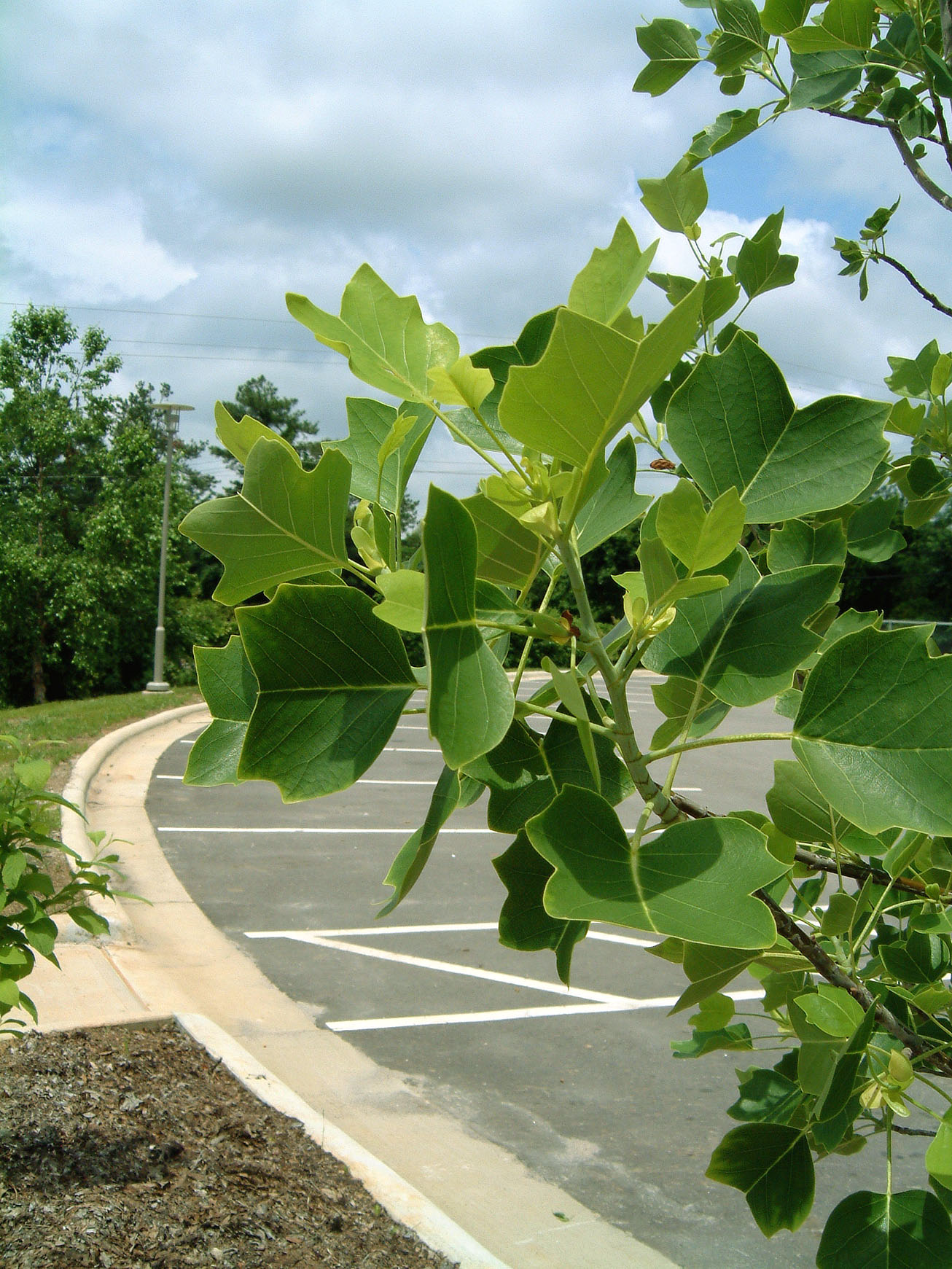Liriodendron tulipifera 'Ardis' click
image to enlarge click
image to enlarge |
| NOS LIRIODENDRON PAGE |
| Copyright
2002-2003. New Ornamentals Society. All Rights Reserved. Lawful for online access only by current society members. All downloading, printing, saving to media, imaging, screen capture, or offline use is prohibited. Duplication by any means, method, or technology is unlawful. Do not link to this page. |
ha: more
compact with shorter internodes than species typical
lw: 1/3 to 1/2 size of species typical
lt: blades thicker than species typical
lc: slightly darker yellow-green than species typical, perhaps because they
leaves are thicker and more chlorophyll density
la: many leaves have a small extension of the midrib into the terminal cleft. It
seems more noticeable and common in this clone.
or: selected by Dr. J.C. McDaniel IL USA
| Liriodendron tulipifera 'Arnold' = 'Fastigiatum' |
ns: this
name has been used in the American trade, especially by Monrovia
Nursery. It arose to denote the
ns: origin of the stock at the Arnold Arboretum
lc:
margined yellow to chartreuse, usually with a very irregular
(sharply lobed) green center. Young plants may be
lc: easily 70% yellow, very bright, and cheerful. In some climates at least it
is nearly all green or not as boldly contrasting by summer. We suspect the
marginal chimera is
lc: what is called "virescent", meaning becoming green. It all but vanishes in
the large tree at the Raulston Arboretum. Best effect in early spring.
aw: RHS AM 1974
| Liriodendron tulipifera 'Aureopictum' = 'Mediopictum' |
| Liriodendron tulipifera 'Compactum' |
ha:
semi-dwarf, compact, possibly more suitable for smaller gardens
lw: 1/2 size of species typical
| Liriodendron tulipifera 'Contortum' ('Tortuosum'?) |
st:
slightly contorted
ls: twisted or more undulate leaves
| Liriodendron tulipifera 'Crispum' |
ls: blades crisped or twisted.
ht: 50-60
ft. tall x 15-20 ft. wide, usually widest at the base when older.
ha: fastigiate in youth becoming columnar (wider) with age. Older
trees may split due to narrow crotch angles but
ha: this is generally not severe.
ns: some consider 'Arnold' to be a different clone but
historically the plants at the Arnold Arboretum are linked to
ns: to 'Fastigiatum'. Distinctions between the two, if any, are
undocumented to our knowledge.
| Liriodendron tulipifera 'Flashlight' |
ns: listed name for a variegated clone. Description needed. Please contact the society if you know this plant.
| Liriodendron tulipifera 'Florida Strain' |
ha:
vigorous
fq: blooming at a young age
ls: rounded lobes
or: Louisiana Nursery USA
| Liriodendron tulipifera 'Glen Gold' |
lc: light
lemon yellow all summer.
or: Australia
| Liriodendron tulipifera 'Integrifolium' |
lc: unlobed or far less deeply lobed than species typical, often forming rectangular or square shapes.
| Liriodendron tulipifera MAJESTIC BEAUTY™ |
lc:
margined yellow to chartreuse
in: a named clone of 'Aureomarginatum' offered by Monrovia
Nursery CA USA
| Liriodendron tulipifera 'Mediopictum' ('Aureopictum') |
lc: centered or blotched yellow.
| Liriodendron tulipifera 'Pyramidale' = 'Fastigiatum' |
| Liriodendron tulipifera 'Ramapoo' ('Ramapo') |
ls:
unlobed to rounded
ns: a clone of the 'Integrifolium' type and perhaps a synonym of
it.
| Liriodendron tulipifera 'Variegatum' |
ls: variegated (mottled?) yellow